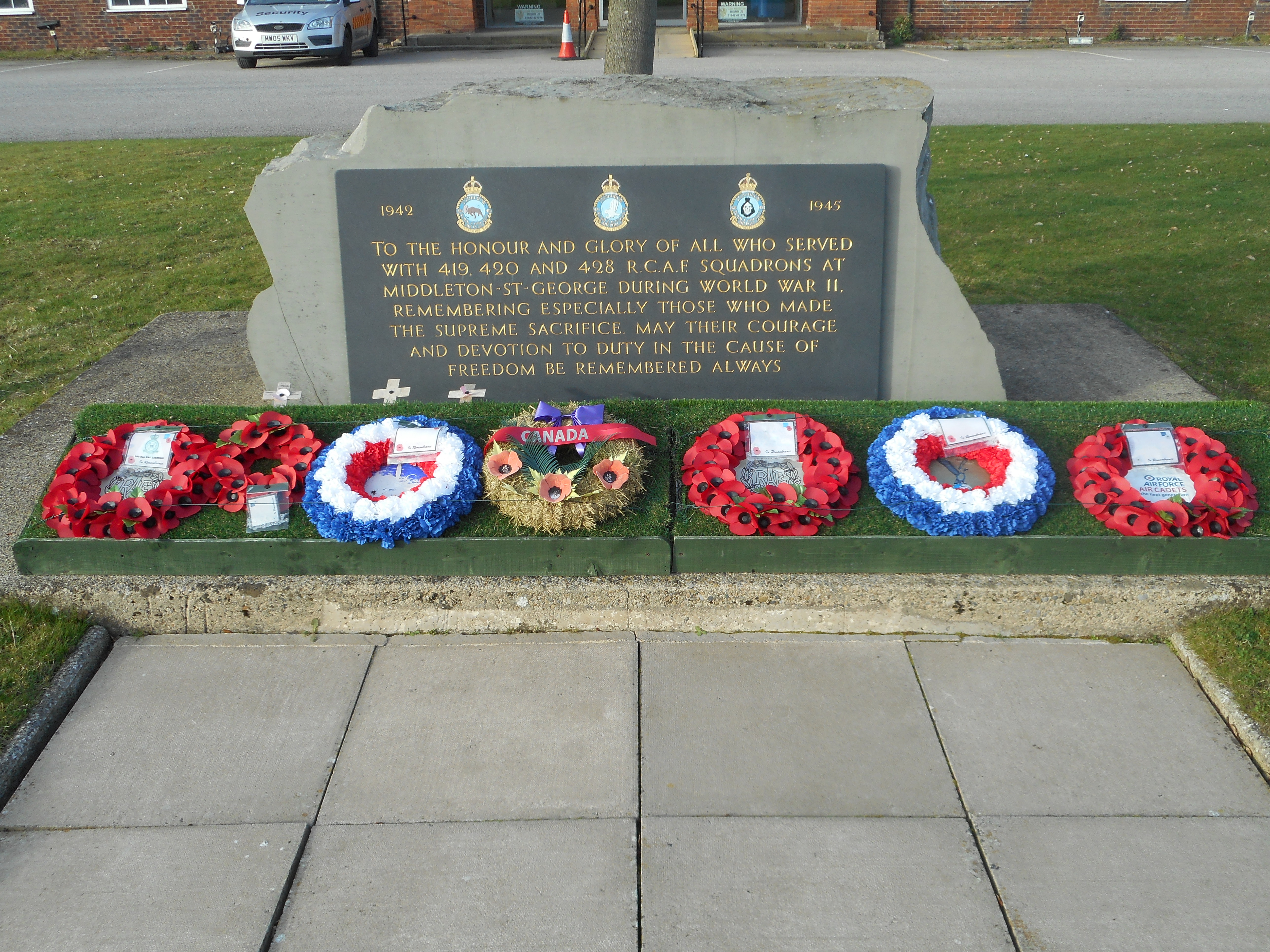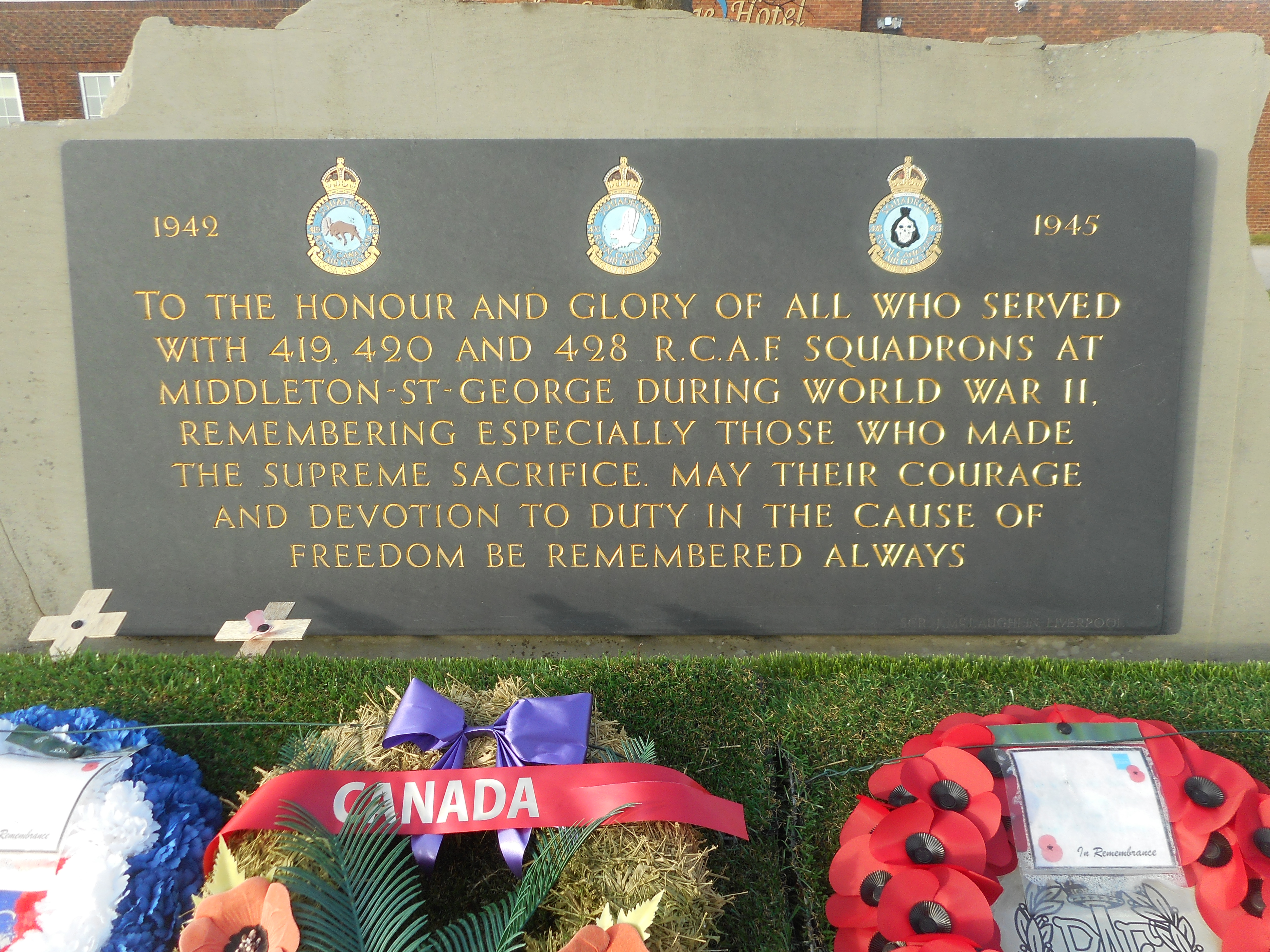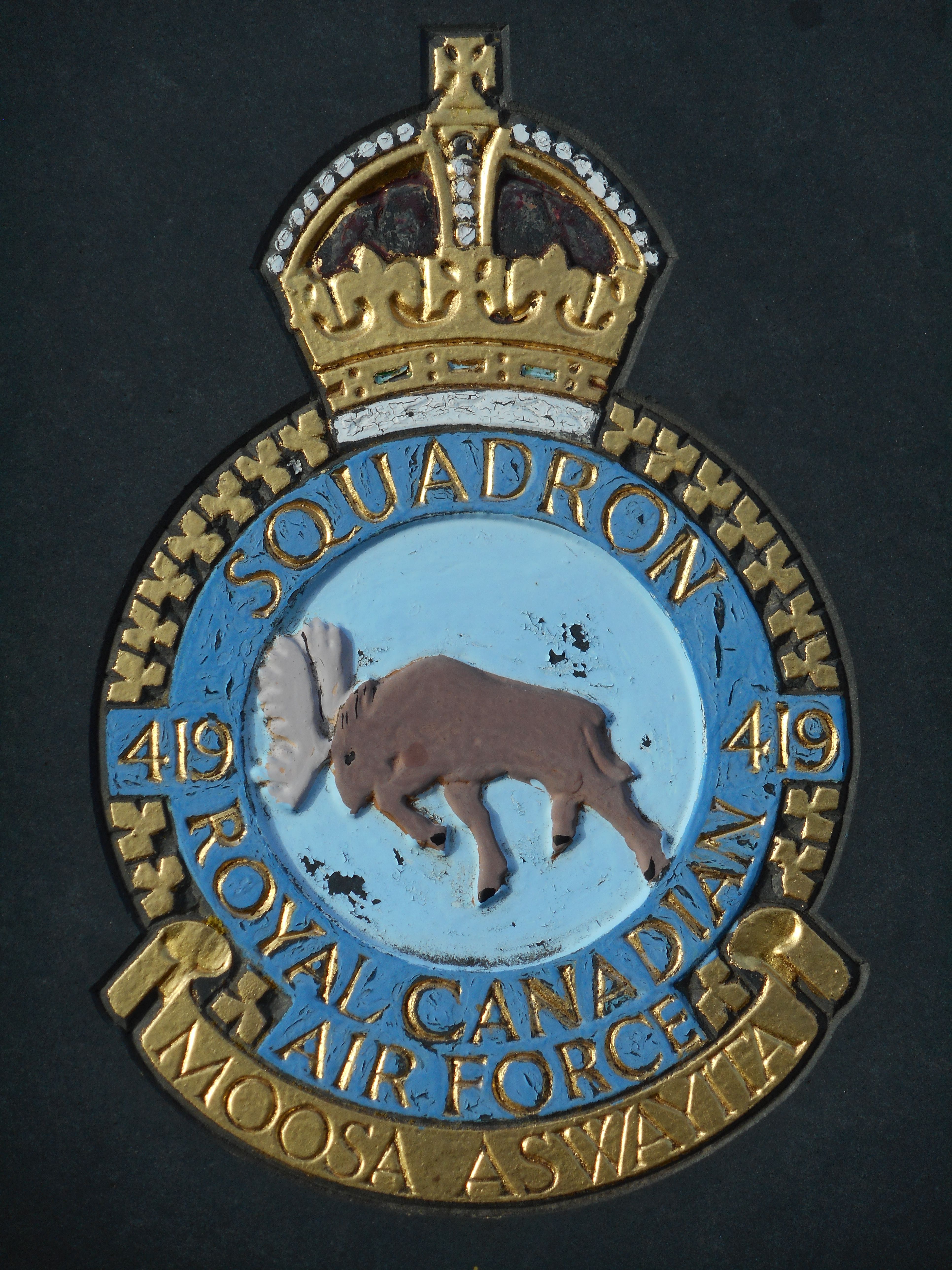Derbyshire, Donovan Emmerson
Personal Information
| Rank | P/O |
| Forename(s) | Donovan Emmerson |
| Surname | Derbyshire |
| Gender | M |
| Age | 26 |
| Date of Death | 23-05-1944 |
| Next of Kin | Son of Seth Carman Derbyshire and Pearl Derbyshire (née Ried), of Wheatley, Ontario, Canada. |
Aircraft Information
| Aircraft | Avro Lancaster X |
| Serial Number | KB717 |
| Markings | VR-E |
Memorial Information
| Burial/Memorial Country | Germany |
| Burial/Memorial Place | Rheinberg War Cemetery |
| Grave Reference | Coll. grave 3. H. 18-22. |
| Epitaph |
IBCC Memorial Information
| Phase | 2 |
| Panel Number | 155 |
Enlistment Information
| Service Number | J/88396 |
| Service | Royal Canadian Air Force |
| Group | 6 |
| Squadron | 419 (Moose) |
| Squadron Motto | Moosa aswayita |
| Trade | WOp/AG |
| Country of Origin | Canada |
Other Memorials
| Location | Outside Former St. Georges Hotel, Teesside Airport, County Durham |
| Country | United Kingdom |
| Memorial Type | Inscribed Slate Memorial Tablet on Stone Memorial |
| Memorial Text | A memorial to Nos 419, 420 and 428 Sqns RCAF who flew from RAF Middleton St George during WW2 |
Miscellaneous Information
| Donavan was born on 11 February 1918 at Wheatley, Ontario. Both parents were born in Wheatley. His mother was deceased by the time of his enlistment and his father was a Merchant. (His records show his mother’s maiden name spelt both Reid and Ried). He has a brother Mac, and sisters Ruth and Ann. Another sister Eve had sadly died aged about ten years. He is shown as attending Rodney Public School, Rodney, Ontario and also Southwold Station Public school between 1925-1932 (High School Entrance). He was then at Lambeth Continuation School, Ontario between 1932-1933 followed by St. Thomas Technical School 1933-1938 (Snr.Matric). He then went to the University of Western Ontario between 1938-1941 (Business Admin). His sport interests were rugby and wrestling. |
| Donavan enlisted on 9 January 1942 and after initial training embarked for the U.K. He arrived at 3PRC on 5 June 1943, and then went to 3 (0) AFU, 15 June 1943, 22 OTU 12 July 1943, 1659 CU, 15 October 1943 and reached 419 Squadron on 20 November 1943. Donovan was to lose his life on 23 May 1944. |
Commonwealth War Graves Commission
The National Archives
| Record of Events (Operational Record Book) AIR 27/1823/10 |
| Summary of Events (Operational Record Book) AIR 27/1823/9 |
Fellow Servicemen
Please note that this list gives all the losses aboard the quoted aircraft and occasionally these may have occurred on an earlier date when the aircraft was not itself lost. Please check the dates of death carefully.
Last Operation Information
| Start Date | 22-05-1944 |
| End Date | 23-05-1944 |
| Takeoff Station | Middleton St. George |
| Day/Night Raid | Night (1% moon) |
| Operation | Dortmund. 375 aircraft, 18 Lancasters Lost (4.8%). Most of the bombing fell in the SE districts and mostly in residential areas. 852 houses and 6 buildings were destroyed. 361 were killed, including 22 PoW. |
| Reason for Loss | Shot down by a night-fighter and crashed south of Mönchengladbach |



